Create a Habitat

Create a Habitat and Receive a FREE Solar Fountain!
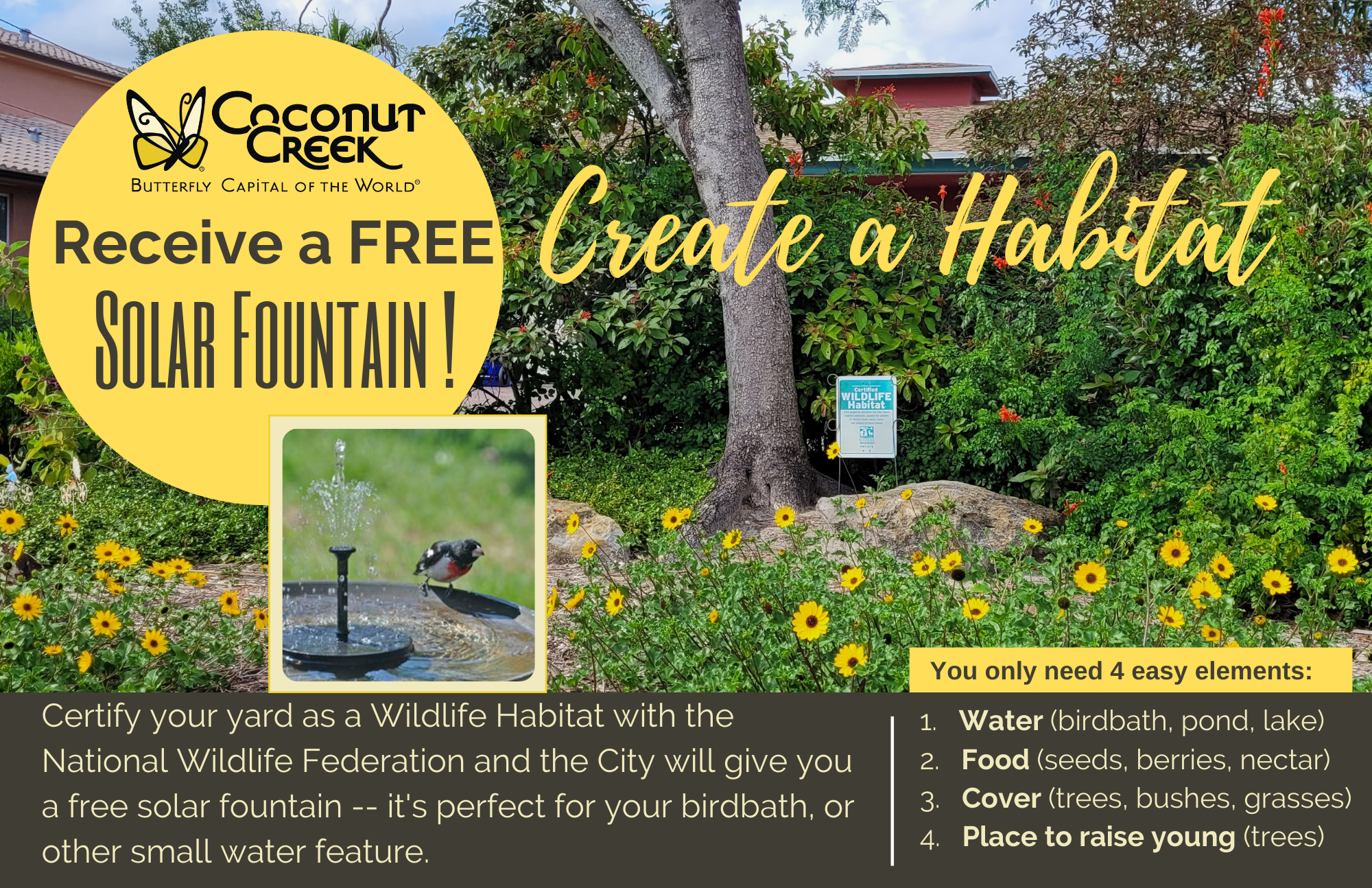
Transforming your yard into a backyard wildlife habitat helps support Coconut Creek’s rich natural environment while providing beauty and enjoyment for you at home. By incorporating native plants, fresh water sources, and natural shelter, you can attract birds, butterflies, and other pollinators, creating a healthy, sustainable space that benefits both wildlife and the community.
You only need 4 easy elements: water, food, cover and a place to raise young. Whether you have a large or small yard, or even a small patio, you can create a garden that will attract butterflies, birds, and other wildlife.
To Claim your Solar Fountain
Once you have provided these elements for a Backyard Habitat, take the extra step to register your garden through the National Wildlife Federation. Upon registration, the City will reward you with a free solar fountain! It's perfect for your birdbath or other small water feature. To claim your solar fountain, email your Wildlife Habitat certification to Sharon Vollmer, Urban Forester.
Water
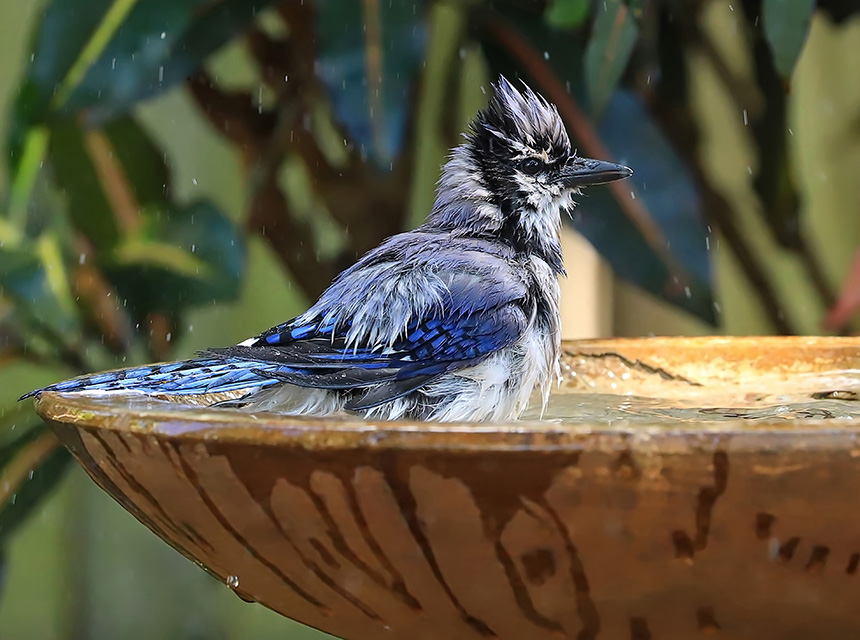
Water can be supplied in many ways. If you live on a canal, lake, or pond, you already have an area some wildlife can access. A fountain, water garden, or small prefabricated pond can also serve as a water source. For limited space, a birdbath, flower pots, shallow dishes, or irregular shaped boulders (that form puddles on the surface) will do nicely.
Food
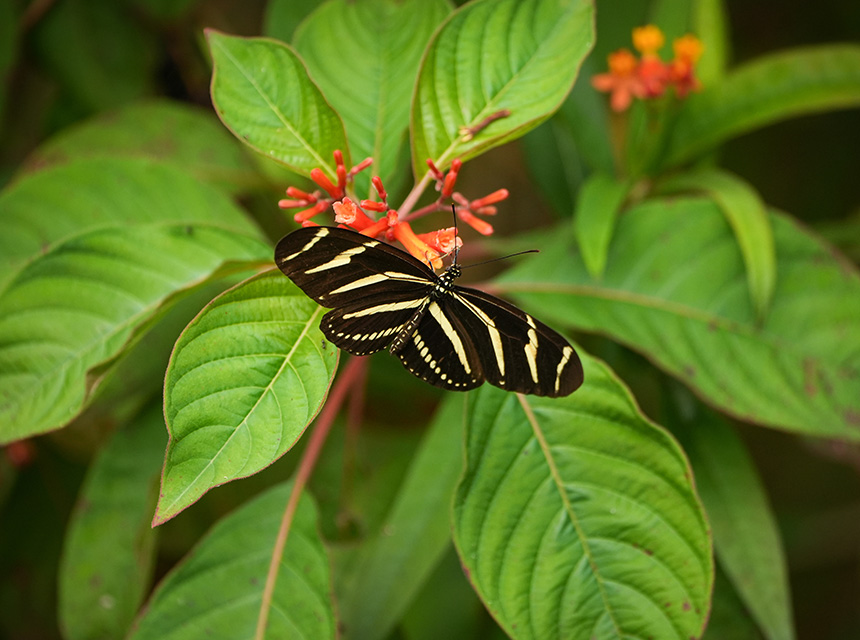
Plants produce the greatest supply of food for wildlife. Trees, shrubs, grasses, and flowering-plants produce foods such as berries, seeds, acorns, nectar, sap, pollen, foliage, and nuts. Planting native plants can serve to recreate the natural habitats upon which our local wildlife populations depend for survival.
Cover
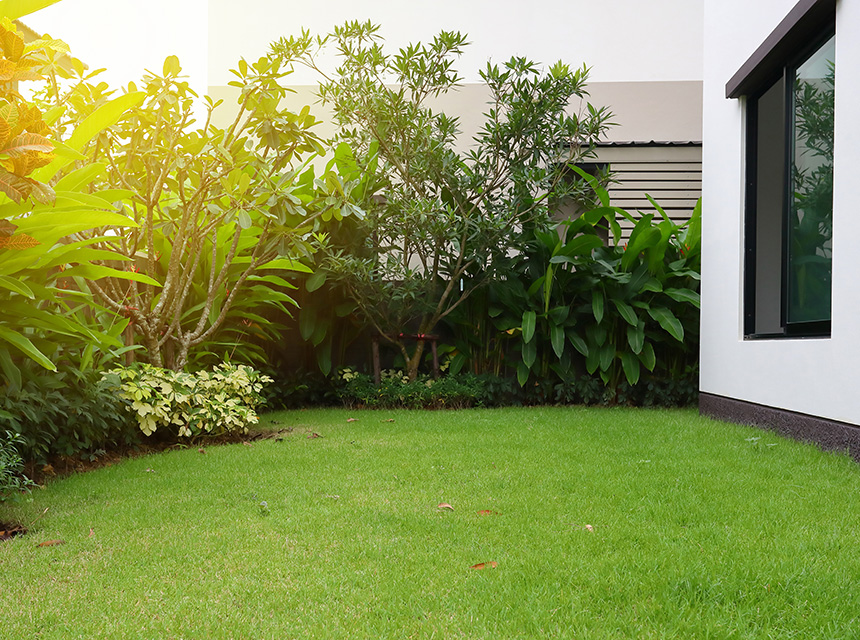
Wildlife need protection from predators and coverage from extreme weather conditions. Trees, plants and other vegetation that provide food can also supply protection and cover.
Place to Live
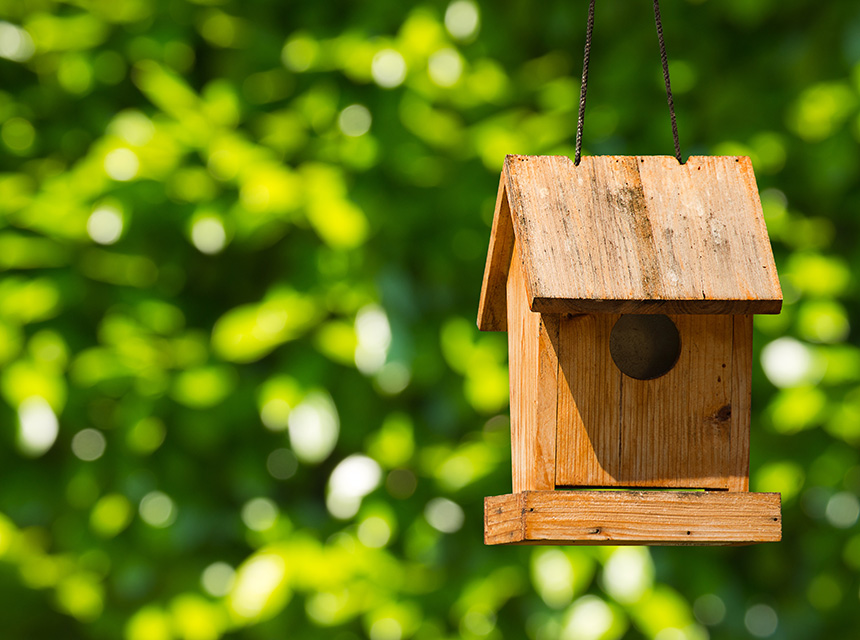
The same plants and trees that provide food and shelter, also provide places to raise the next generation of offspring. Creating several layers of vegetation by planting trees, understory plants, groundcover, and grasses can both serve to protect the various species that call your yard home, while giving them spaces to court a mate, build a nest, lay eggs, burrow in or dig a hole and raise babies.
